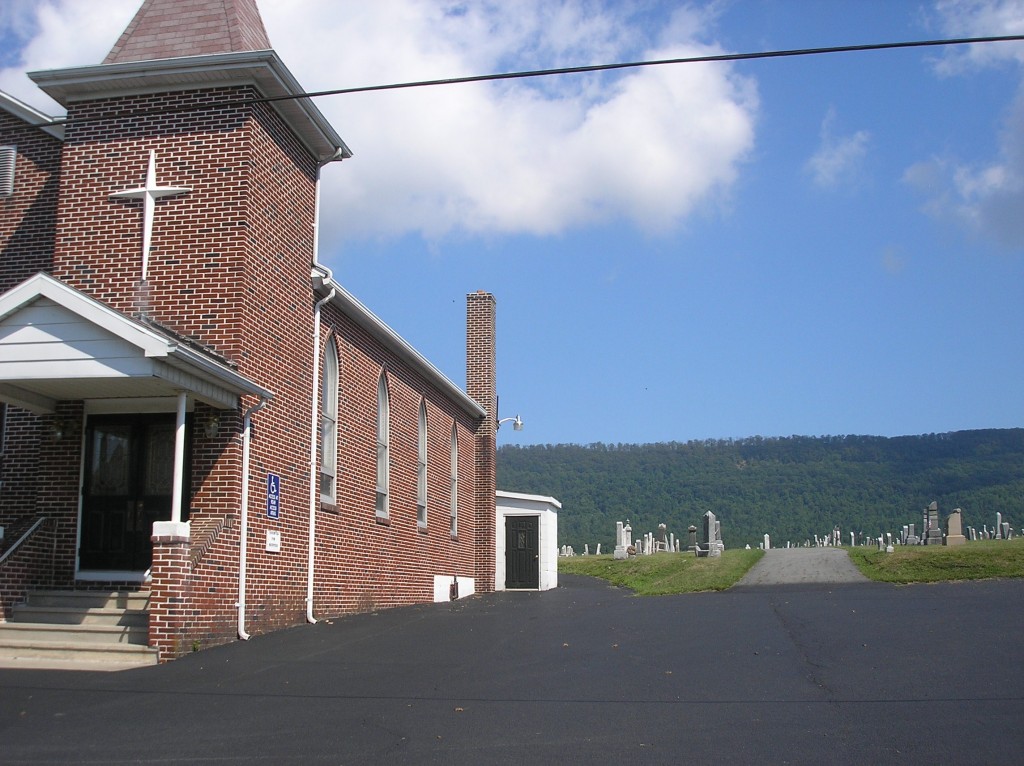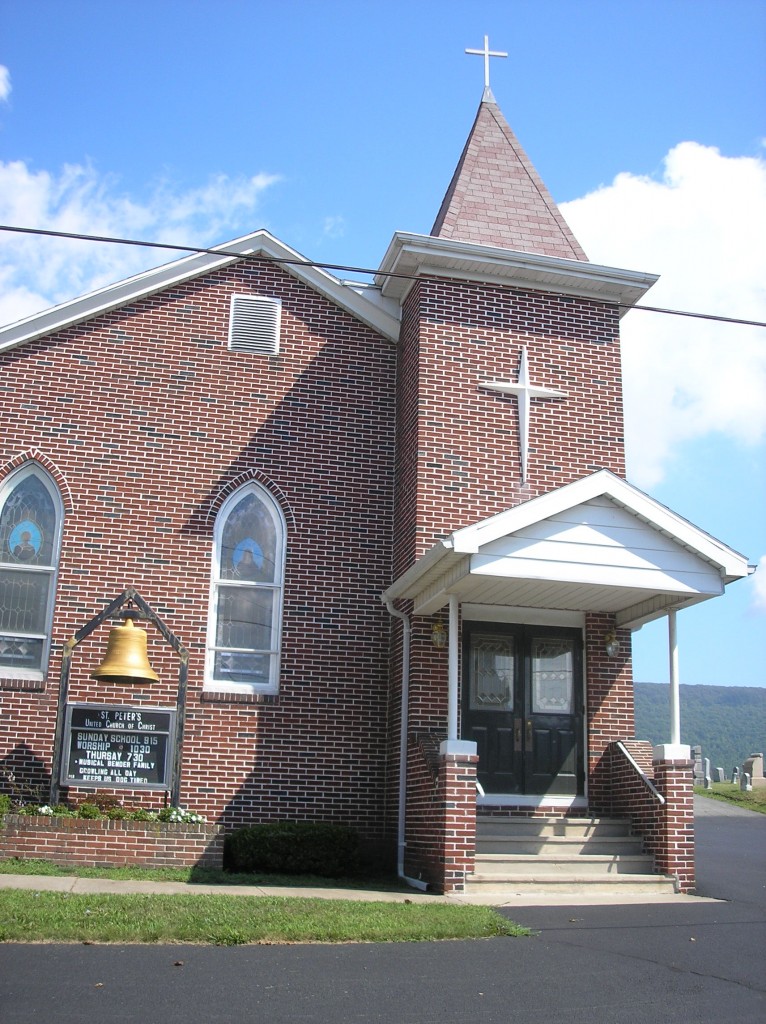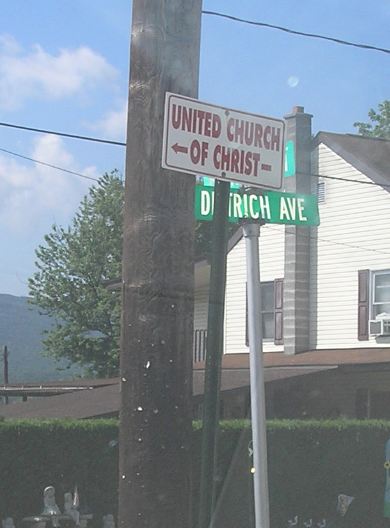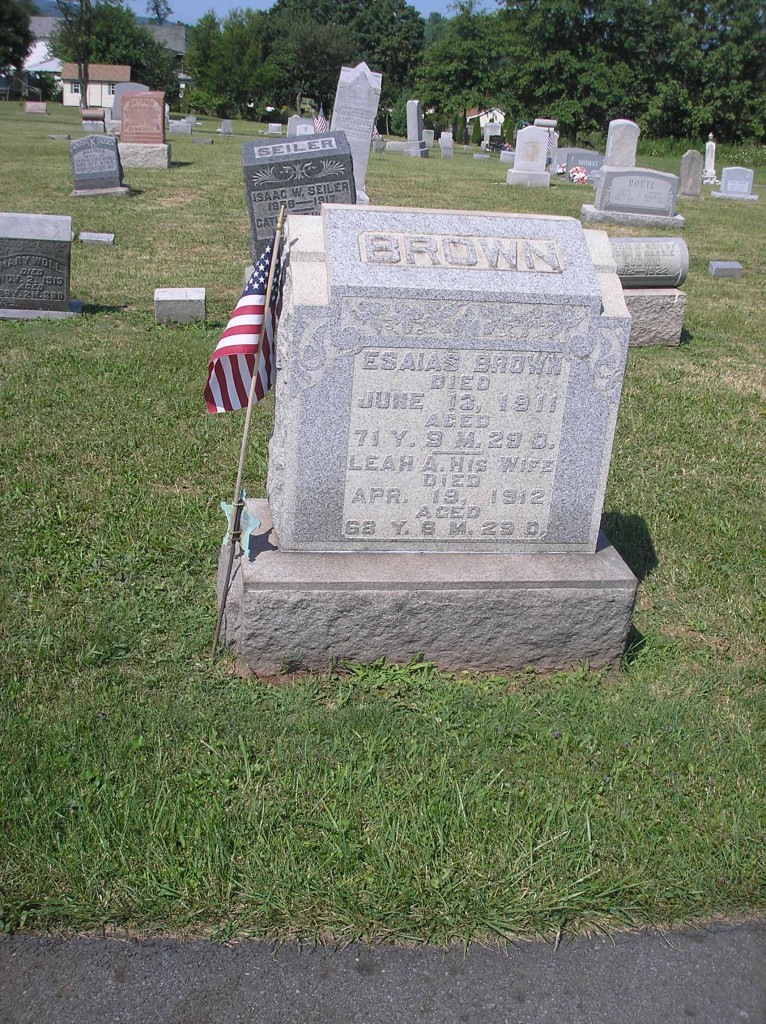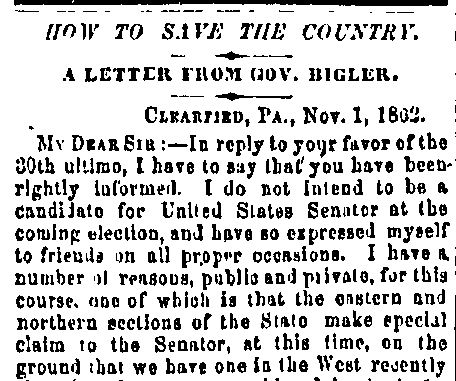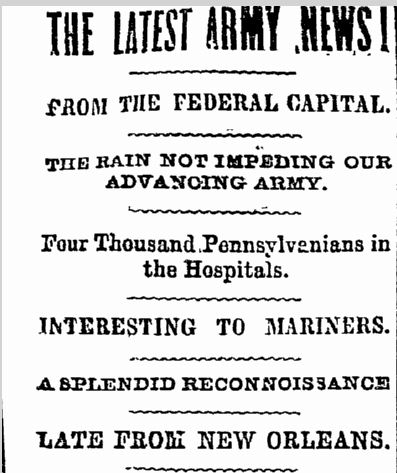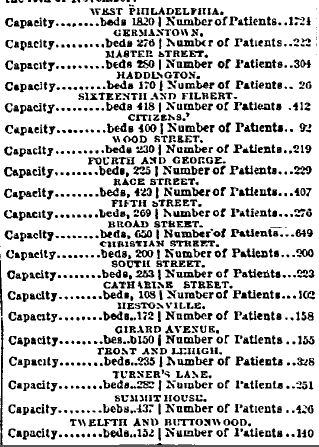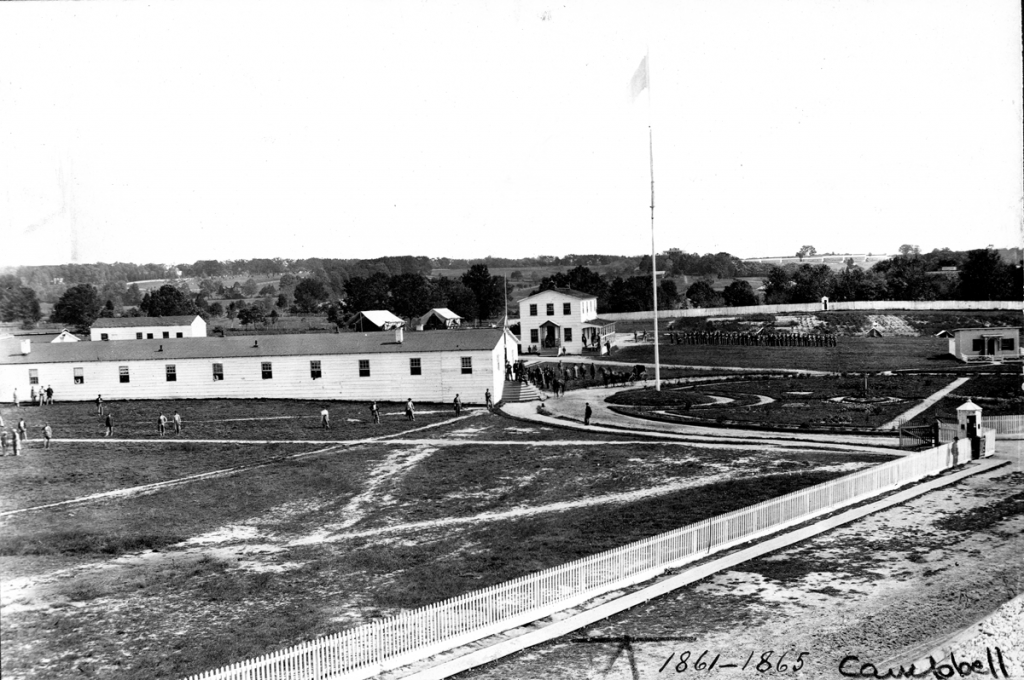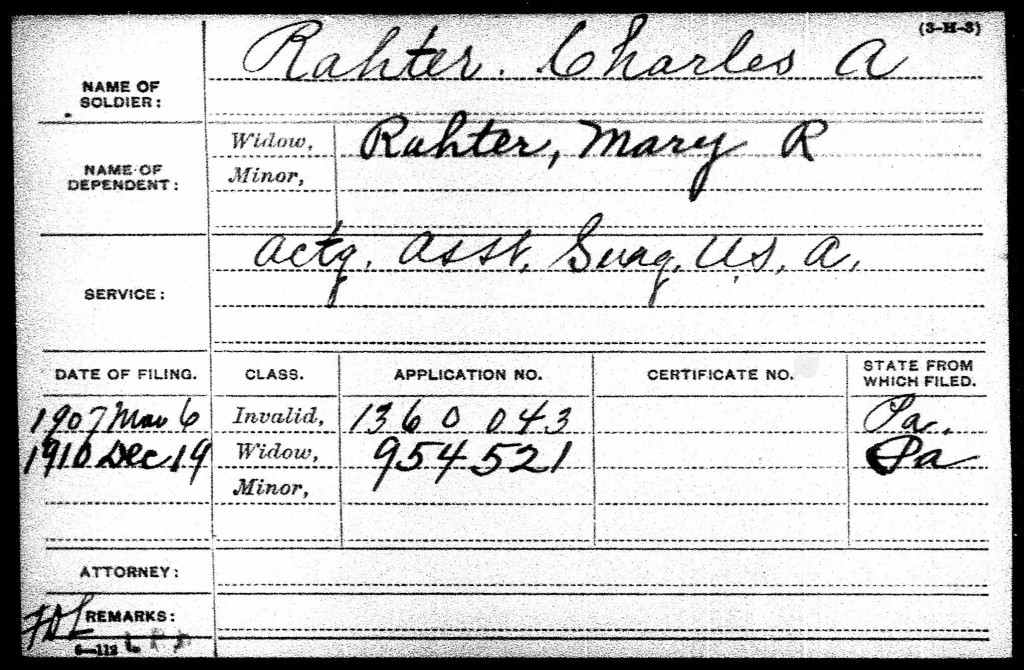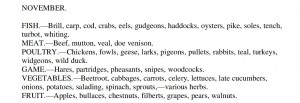Posted By Norman Gasbarro on November 20, 2012

Of Rev. John R. Kooken, it was said that “as a pastor, he was faithful, earnest and successful, and as preacher, acceptable and even popular. He unfortunately took up the sword, and, in accordance with the sure word of inspiration, ‘died with the sword.'”

During the Civil War, Rev. John R. Kooken was Capt. John R. Kooken of the 110th Pennsylvania Infantry, Company C. He was mustered into service on 27 June 1862 and was killed in action at the Battle of Fredericksburg, Virginia, 14 December 1862. He is buried in the Fredericksburg National Cemetery, and his grave marker is pictured at the top of this post.
Prior to the Civil War Rev. John R. Kooken was the Reformed pastor of the Fetterhoff Church in Upper Dauphin County from 1841 to 1843, and hence his inclusion in this Civil War Research Project.
From the section on the history of the Fetterhoff Church, Jackson Township, Dauphin County found in the Commemorative Biographical Encyclopedia of Dauphin County, p. 739, we learn the following:
In 1841, Rev. John R. Kooken became pastor of the Reformed Congregation, and held his first communion 17 October, and continued to serve the congregation to 16 April 1843, and was assisted in his last communion by the Lutheran minister, Rev. William G. Leitzel. Records show that Rev. Leitzel was pastor of the Lutheran congregation from 17 April 1842 to 16 Apr 1843 and that Rev. Kooken assisted him in his last communion service.
The Rev. Kooken… became quite prominent politically, being appointed United States Consul at Trinidad, Cuba, and remaining there until the breaking out of the Civil War, when he returned to the United States. Having considerable military knowledge, he organized a company of volunteers, became their leader, and was killed in the Battle of Fredericksurg, Virginia, in 1862.
From The Fathers of the German Reformed Church in Europe and America, by Rev. H. Harbaugh, and published in Lancaster (England) in 1872, we learn the following about Rev. Kooken:
REV. JOHN R. KOOKEN (1815-1862)
Mr. Kooken was a native of Centre County, Pennsylvania. Of the exact time and place of his birth, and of his parentage, we have not been able to obtain any definite information.
He pursued his literary and theological studies at Mercersburg, Pennsylvania. Having completed his course, he was licensed to preach the Gospel, and ordained to the holy ministry, by the old Susquehanna Classis, in 1841, and settled in Dauphin, Pennsylvania, as a pastor of a charge composed of six congregations. He remained here about two years, when a call was extended to him from the Grindstone-Hill Charge in Franklin County, Pennsylvania, which he accepted, and entered upon his duties in this new field in 1843. The charge was composed of four congregations, and required much labor and exposure to do justice to the people. His services were generally appreciated and crowned with an encouraging measure of success. He remained here until the fall of 1844. Soon afterwards he accepted a call to the Trappe, in Montgomery County, Pennsylvania. This charge was composed of two congregations, namely, Trappe and Vincent.
After serving in this last field for several years, he went to Norristown, in the same county, and established a very flourishing congregation – a new and beautiful church being built during his pastorate. He labored in this congregation for a period of about five years, up to 1852. In the meantime, he founded a flourishing school for young ladies, the Elmwood Seminary, which he, in connection with several other brethren, carried forward successfully along with the congregation. Both the church, erected during his ministry, and this school, bear testimony to his zeal and industry, and show what can be accomplished by one who is animated by a proper spirit of enterprise and zeal for the cause in which he is engage.
After resigning at Norristown, Mr. Kooken was for some years without any regular pastoral charge. part of this time he resided at Mercersburg, and was engaged in teaching. At a subsequent period he was appointed United States Consul at Trinidad, Isle of Cuba, where he remained until the breaking out of the war, in 1862, when he returned North. Having some knowledge of military affairs, and being of an ardent temperament, he raised a company of volunteers, became their leader, and conducted them to the scene of conflict. He was slain in the Battle of Fredericksburg, Virginia, in 1862.
During his pastorate at Trappe, Mr. Kooken was married to a lady of that place, in 1845 or 1846, who with two children -the fruit of this union – were left to mourn his untimely death. He was aged 47 years and some days.
Mr. Kooken was rather tall, well set, of florid complexion, ardent temperament, and unbounded energy and enterprise. His lively disposition made him a very agreeable companion and always drew around him a host of warm an enthusiastic friends. As a pastor, he was faithful, earnest and successful, and as a preacher, acceptable and even popular. He unfortunately took up the sword, and, in accordance with the sure word of inspiration, “died with the sword.”
In other published biographical accounts, more is learned about John R. Kooken. In one, it was said, that in historical accounts “he has almost completely dropped out of sight.” A reason for this was his short life, which, “had he been permitted to live, would have stamped him as a remarkable man.”
In describing some incidents in his life which foreshadowed his military interests, this source notes the following:
[In 1835] he at once became one of the leading spirits on the side of the students in the formative and organizing days of Marshall College. Course of study was somewhat mingled in the college and seminary, as was the way with theologians of that early day, and in 1841 he became pastor of a charge in Dauphin County, composed of six congregations.
Mr. Kooken received the title of “General” at his boarding club. One of his fellow students was called “Cardinal” and another the “Judge.” The military title suited young Kooken so well that he retained it among his friends throughout his life, or perhaps until he became a captain through meritorious service at the front in 1862. There was something martial in his appearance and style, as well as in his constitution. He was always regarded as the champion and protector of the students, especially of the weak against the strong, whether good or bad.
“General” Kooken had many opportunities to exercise his bellicose propensities. Dr. Appel relates that “on one occasion, on a dark and stormy night, some of the students became alarmed at a suspicious light in one of the recitation rooms long after midnight. It was supposed that burglars were about the building, and Mr. Kooken was aroused from his slumbers and duly informed of all the circumstances. After dressing himself, as his roommate informs us, he siezed [sic] his dirk, and proceeding to the door where the light was, peremptorily demanded admittance. As this was refused, he broke open the door, when, to his confusion, he was confronted by Professor Budd, who, unable to endure the noise of the winds howling around him in the fourth floor, had come down into his class-room on the first floor and was poring over his mathematics when the door was suddenly burst open.”
Professor Budd seldom rebuked anyone, but when he did so, it was at the right time, and was always felt and his brogue had a rich flavor about it.
Other anecdotes are given in this account, including the reasons for his appointment as Consul at Cuba – both his military experience and an affliction to the throat which necessitated residence in a warmer clime.
Of his military experience in the Civil War, this account tells the following:
Captain Ezra D. Brisbin, of Company C, 110th Regiment Pennsylvania Volunteers, resigned on 16 June 1862, and ten days afterward, John R. Kooken was commissioned captain of that company. He led his company at the Battle of Cedar Mountain, on 9 August 1862, and afterwards at Thoroughfare Gap. During the Antietam Campaign, the 110th Regiment was kept within the defences of Washington, and was posted at Arlington Heights. Rejoining the army near Harpers Ferry, the division, now under the command of General Whipple, moved with the army to the Rappahannock, and on the 13th December 1862, took art in the Battle of Fredericksburg, being with Franklin on the left,. Company C sustained sever loss, Captain John R. Kooken being mortally wounded. He died on the day following the battle, 14 December 1862.
A rather large file of information has now been compiled on Rev. John R. Kooken – which includes the transcript of a letter sent to his widow informing her of the manner in which Capt. Kooken died as well as copies of all the papers from the widow’s pension application file, originals of which are found at the National Archives in Washington, D.C. Unfortunately, no picture has yet been located of Rev. Kooken. Additional stories and information are sought for the Civil War Research Project on this minister of the Gospel whose first charge was in Upper Dauphin County and who “took up the sword and died by the sword” in the cause of the Union during the Civil War.
——————————-
The Pennsylvania Veterans’ Index Card is from the Pennsylvania Archives.
Category: Research, Resources, Stories |
1 Comment »
Tags: Jackson Township
 ;
;
